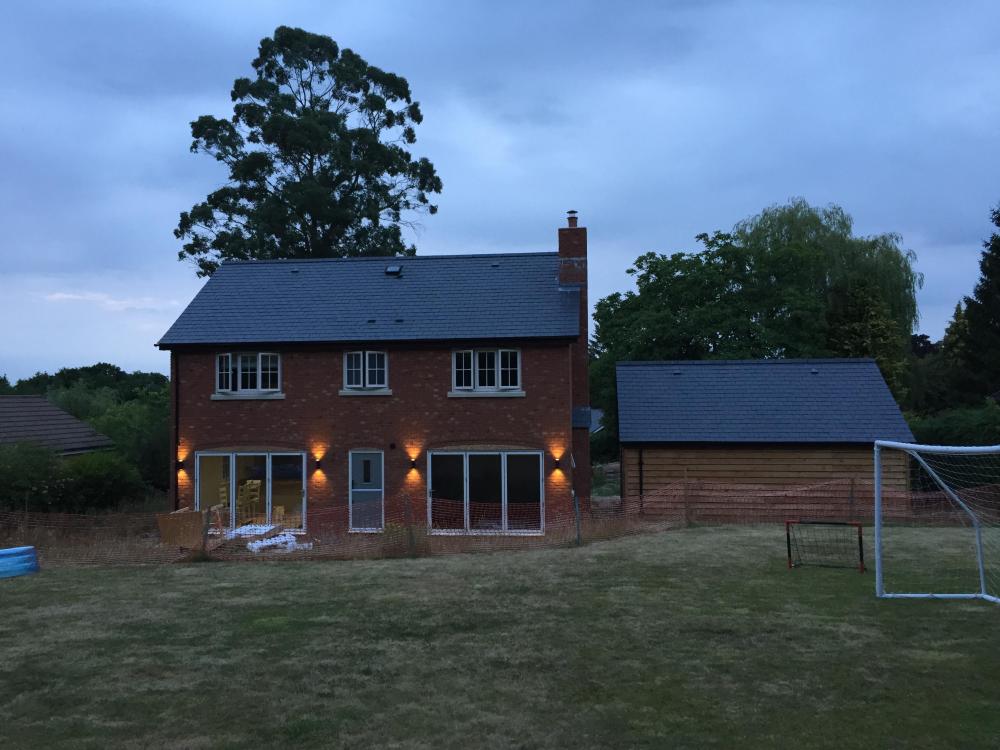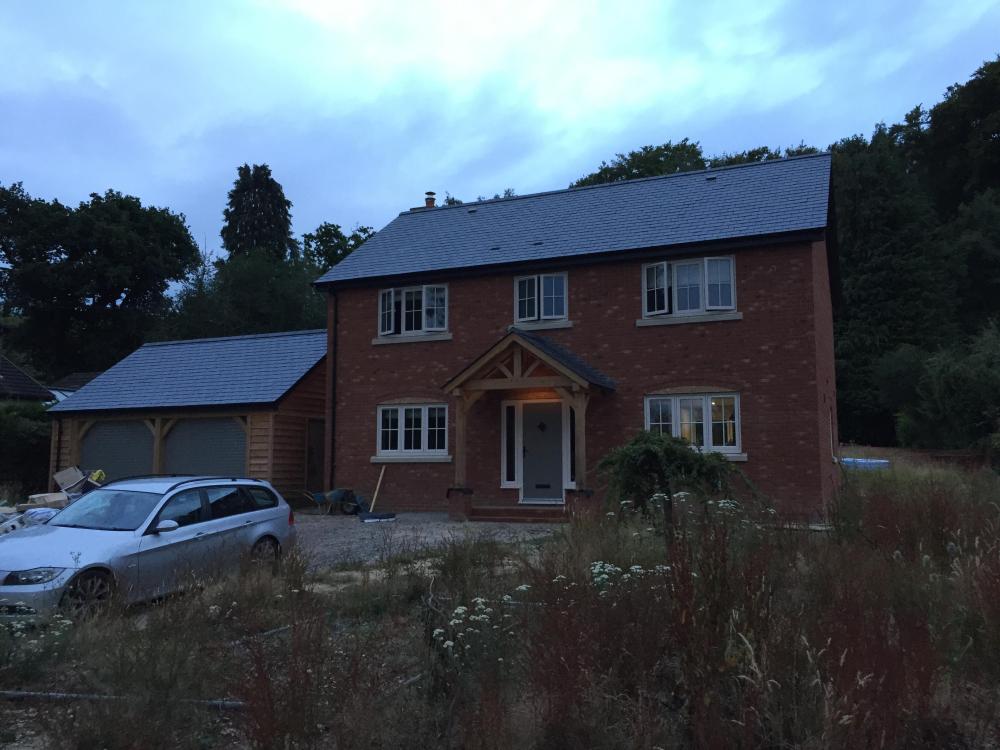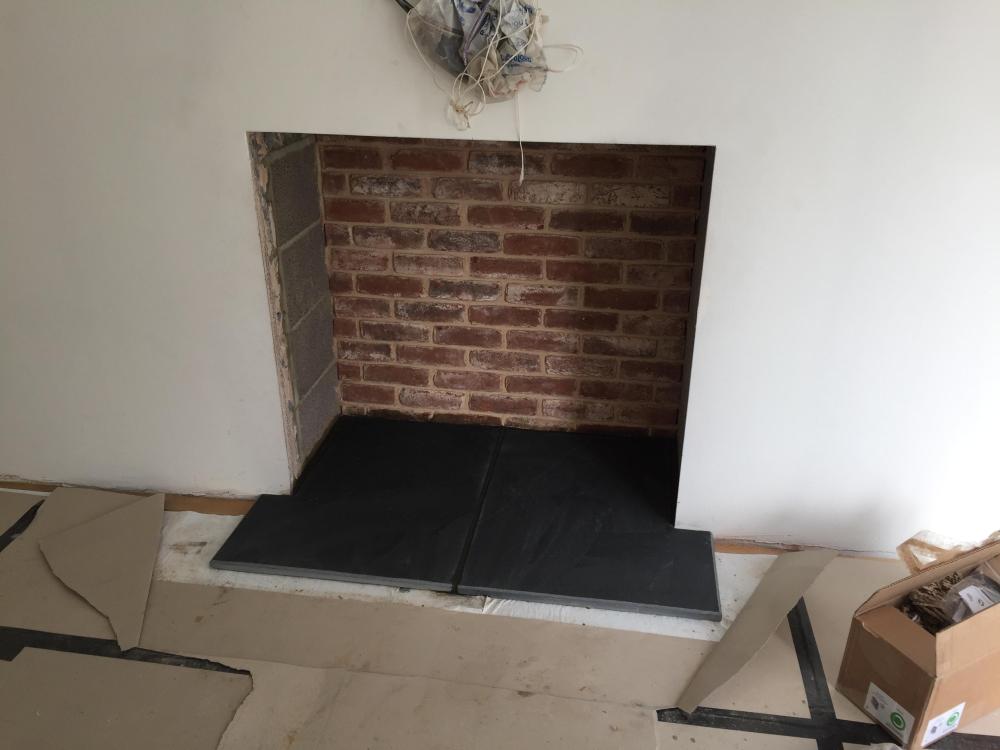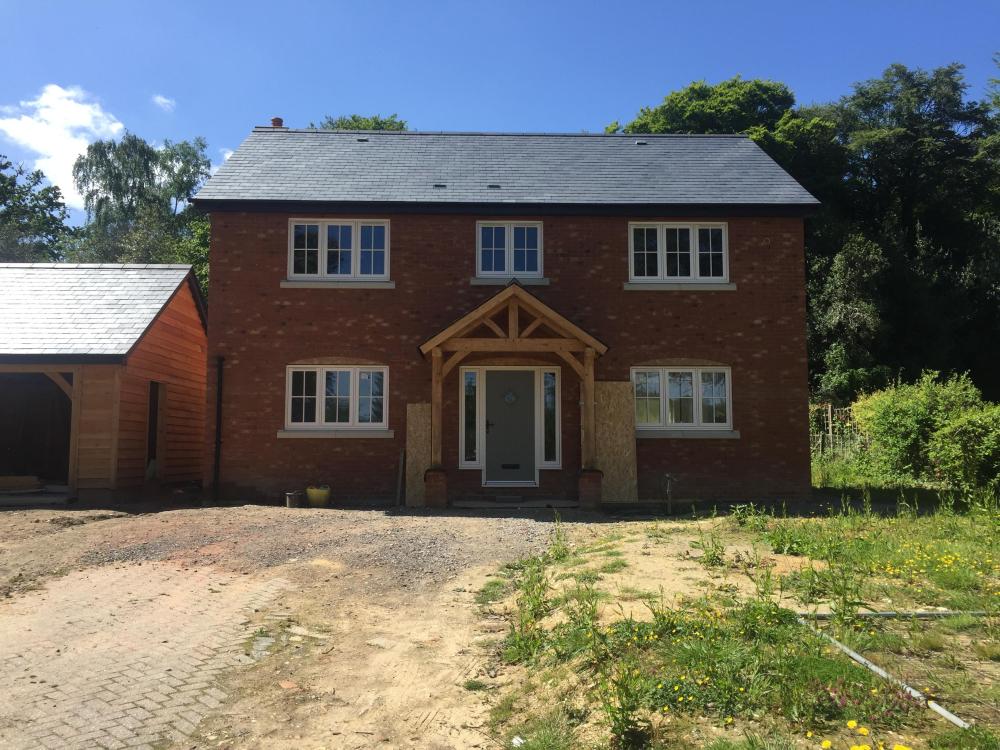Leaderboard
Popular Content
Showing content with the highest reputation on 09/27/22 in all areas
-
3 points
-
3 points
-
Have you started building, not quite following? Once BCO has approved drawings you then build to what is approved. If they are questioning it, it sounds like building warrant not yet issued and you have not started building. In which case if you really really want a greenhouse, delete it from the plans, get building, and add it after completion certificate is issued.2 points
-
This is what I said yesterday, always worth asking 🤷♂️2 points
-
In practical terms, you may well be right that the TF company won't sue, but this: ... is 100% wrong. And even if you're right on the practical reality, the OP didn't ask whether they can or should just press on irrespective of the legal position. They asked: The plain answer is no, because nothing can stop the TF company proceeding as far along the process as they choose. They might decide it's worth at least a letter before action even if they have no intention of litigating. Do you think a letter from a lawyer threatening the OP's friend with court will lower her stress levels?2 points
-
Hi, As a small step towards repaying the valuable advice I have received on this forum I thought I'd share the attached document, which I hope will be useful and/or interesting to forum users. I am a planner by trade, working in local authority. My SB is on a relatively small, highly inaccessible plot neighboured by mature trees, and tightly bordered by existing houses. The plot was a 'detached' back garden of sorts that came as part of the deal (and something of an afterthought) when we bought our current house. Nobody had ever even considered the prospect that it could be a building plot, and for many years I discounted the idea myself due to the restrictions listed above. Five years ago, having outgrown our house and exhausted other options, I decided to at least try to self build on the plot. I obtained permission at the first time of asking (albeit not quickly and not without having to make a tweak or two). Everyone, without exception, from family to neighbours to building tradesmen to delivery drivers to other planners, have commented on how 'well' I've done to get permission. Some of them probably thought I'd made a mistake, or that the Council did, or that there was some old pals act involved because I am a planner myself (even though I don't work in the borough where I am building, and it really, really doesn't work that way anyway). They are all wrong. I obtained permission because I did the thing that planners spend their working lives telling others to do - I read the relevant planning policies, designed a development that was in line with them, then demonstrated as much in the application. That is what the attached statement does, it goes from global to national to regional to local policy, then explains the thought process behind my design, in that context. I cannot tell you how many architects, developers and would-be planning consultants fail to design development proposals specifically to meet planning policies, and then spend ages moaning, appealing, resubmitting, and generally wasting time. I can't promise that if you follow the thought process in my document you'll certainly get planning permission, but I hope you find it a useful insight into how a planner approached self-build, and specifically the matter of seeking planning permission on a plot that the rest of the world had discounted. Cheers 647910914_DesignandAccessStatementRedacted.pdf1 point
-
The journey has started, but I'll need plenty of support. Currently working with architect for a design to submit for planning. I'm intending to employ a PHPP consultant to assist and advise on the design, and have a planning consultant to help navigate the local planning shenanigans (Green Belt, but we already have a Class Q approval). I'll be back!1 point
-
Who would have thought it!? “Common”, I am not so sure of; I‘ve never seen it myself in over a 1/4 century of being in the construction industry ( but I’ll admit I wouldn’t have been expecting / looking for it ), but a random Google search ( posted as a non expert I hasten to add )….. Problem: Ants and insects infest poly-bead insulation Poly-bead insulation is prone to becoming a foodstuff and home for insects, bringing unwanted insect guests into the home and presenting an insect infestation that can be difficult to treat. Solution: Replace poly-beads with an insulation that won’t become a foodstuff for pests Chemical spray foam insulation is impervious to pests and insects, and won’t deteriorate or become food for such critters. This combined with the tough seal it provides against holes, gaps and nooks and crannies means that not only will pests not be able to find a home and infest within the insulation, they shouldn’t be able to enter the property at all.1 point
-
Hopefully zoot has stopped reading this now to preserve his blood pressure but I'm afraid it would be a case of "magical thinking" to contend that no matter what type of house construction is subject to these conditions, they will all suffer the same fate. While it may seem this way, it can be shown to be physically impossible by considering extremes: For instance if we build a habitat on Mars it would have to behave exactly the same on Mars as it would when transplanted to zoot's location. From there we can gradually widen the constraints and uncover the failings in construction and operation that lead to an exchange of indoor and outdoor environments. Of course it might take a considerable budget to achieve it. More than is commonly deployed for domestic dwellings.1 point
-
Like the idea but would need architrave to cover the carcassing timber on the hinge side of the opening - assuming 18mnm ply not thick enough on it's own? I was planning on glueing strips of ply to the outside edge of the ply linings to cover the junction with the carcass/blocks, in essence making the lining look like even thicker ply. As above, some margin for error if I add ply strips for architrave I guess. The blocklayer comes highly recommended so I hope he can make the opening accurately without frames to work to.1 point
-
The point is that Zoot seems to think that any house in his area will always be cold and damp. He said "LOCALLY-specific (not house-specific!!)", whereas I think a PH will function as a PH in his area.1 point
-
The Scottish system they are supposed to pick the drawings to bits right at the start and only when they are happy with all the details do they issue the building warrant and you start. as long as you pay the fee whenever requested to renew the building warrant on a slow build (the time seems discretionary) then whatever version of regs was in force at the start remains, e.g we were building to the 2013 version of the regs. To avoid argument, I would just complete without the greenhouse. The greenhouse is not necessary to meet building regs. If they are really going to be jobsworths, they could ask you to submit an amendment to remove the greenhouse from the drawings, they talked about that with me and I more or less told the BC officer that it would be impossible to update the drawings now as the architect firm had gone out of business, so they did not enforce that. My case was the plans showed 2 stoves and i had only installed one.1 point
-
Correction to my first post: there is a definition of Porch: "Porch means a building attached to and providing a covered entrance to a dwelling. " Sounds exactly like what I want to build. A big porch and not a greenhouse "used primarily for growing plants".1 point
-
@Hastings. I have the musical answer to all your questions 😛.1 point
-
Sounds like you have a door to block, other considerations not intervening. Or see if it meets the definition of "porch". But do look up "covered yard" in Scotland. In England it is something which exists in law, but is not precisely defined anywhere - so very useful. I made a similar "covered way" - basically what here we call a "lean to", which is a weather protected wide walking route. Then added the door into the house 2 years later to give my tenant a laundry / dog space. Saved a lot of form-filling. and some fees.1 point
-
The blockwork will need to be spot on. If you went for the chunky ply you could omit the architrave and have the exposed edge and a 15mm shadow gap and recess some Compriband or similar in there.1 point
-
I'm not very au fait with this except that I added a secondhand conservatory to the back of a house, with a real tin roof and more insulation. So it was no longer a conservatory - no idea what it was, as everyone calls it a conservatory. My considered strategy was that it was behind the house so no one could see it, and nearly exempt from PP as was except that it was 4.2m deep - just over the 4m limit, and therefore not to tell anyone anything, build it well, and keep stum until enforcement became impossible. Which has now happened. Given that the knowledge is out, can you argue that it is something else, or arrange for that to be the case, eg glass porch or covered yard? Alternatively you could brick up or otherwise seal the door so it meets the defn of a greenhouse, and unblock it later after any inspection. Something like a light wooden framework and cladding plus a few shelves would do it. F1 point
-
The lower floors of the neighbouring block of flats would have less "sky" to look at even though the daylight/sunlight report says that all of their windows pass the required regulations.1 point
-
You may be able to get the birch ply at 30mm thick and certainly 24 / 25mm. Get the supplier to cut the sheets down to your required widths. The whole sheets are almost too heavy to pick up unless you are @nod's wife who can run up a ladder with one under each arm.1 point
-
450mm isn’t enough for a straight scabbler anyway so might as well go for 300 and use right angle scabbler1 point
-
150mm from top of pipe but must be encased in concrete. Unlikely to freeze with a decent fall (ie 1:40)1 point
-
Door width plus 3mm gap each side, plus carcass thickness (x2) plus allowance for packing off blockwork, say 10mm each side.1 point
-
Hello and welcome, just about every topic and answer can be found with some searching on here and if that fails then post a specific question.1 point
-
If you have mvhr, switch it off and externally tape up the inlet and outlet vents. Seal any cat flap, air inlet for stove (if not room sealed) etc. If no mvhr individually seal each extractor fan.1 point
-
My understanding is you connect the cable from the static into one of the LAN ports and it just acts as a network switch. If you are not using the 4G router you will need to go into it's settings and turn off most of it's functions e.g DHCP etc. Might be simpler just to buy a cheap 8 port network switch for the amenity block. You will have some long cable lengths (about 100 metres is the limit) so buy GOOD quality CAT6 cable make sure it is COPPER not copper plated aluminium. I doubt you want a wired network port, just give them wifi, the access point can be in a locked cupboard without guest access, and just give them the password, or considering how remote you are (there won't be any passers by within range) make the wifi for the cabins open access without a password? (I would not do that in a built up area)1 point
-
1 point
-
Yup. Fit and forget with Hep2o. Use a bullnose T ( 10x10x15 centre ) so you have 15mm coming off the tee, then you can go to chrome and compression onto a stub of copper. For the basin I’d just leave a neat recess out of site with the 10mm pipes ending in 2x 10mm M&F bends with 2x 10x 1/2” Hep2o vs brass adaptors, and the flex is from the taps straight onto those.1 point
-
1 point
-
1 point
-
Make sure all your windows and doors are properly adjusted (assuming they're adjustable). That can make a difference. If you have any incoming ducts for water, electricity, etc, that are open to the outside world, make sure they're sealed at the house end before the test.1 point
-
How..???? I’ve buried hundreds of these as has @Nickfromwales and I don’t think I’ve ever seen an issue… Use the correct insert, don’t try and use chrome pipe as tails, and then just clip back and plaster over. If you’re worried about pipe movement you can wrap the pipe with fibre insulation as plaster bonds onto it.1 point
-
Next line down “Where the pipe is totally restrained in a concrete floor (e.g. as underfloor heating), the stresses are so low that they are absorbed by the material” Never had an issue and tbh it’s usual that the pipework exits from the top of the wall into a void anyway.1 point
-
Hep20 fittings (no compressions) bury them in walls or floors and forget about them. we have tried Hep20 for low pressure hydraulics and it’s amazing just how much pressure and abuse it will stand.1 point
-
Apparently it's only on areas directly accessed from the building. So not a treehouse, pergola, ornate fountain/pond, bandstand or shed in the middle of your garden. Just think of all the little landscaping walls and details with falls over 600mm. Country would end up being one big ballustrade.1 point
-
Just remember Good builders are always booked up Be prepared to wait for a start date1 point
-
Plus 2. We found our builder by driving around looking for building sites with nice houses. When I told them I was going to need a builder they all hapilly showed me around. Nothing like an unannounced inspection for getting a good idea what they are like. One or two sites were horror stories. Look for attention to details like air tightness, neat plumbing or evidence they are protecting wood flooring or stair cases. Try and ask a few questions. Had a few tell me "You dont need to worry about that we take care of it". Others took time to explain or show me how they were doing it on the house they were working on.1 point
-
1 point
-
That looks better than most professional sites. Quite an achievement! How come you have beam and block in the basement when there is already a slab?1 point
-
That sounds the fan is hitting something. Switch it off at the mains, and take the front cover off. Have a good look inside. There will be a heat exchanger in the middle pull that out and that should give you access to the motors and fans - the heat exchanger will be a tight fit, mark which way is up and only put back in the way it came out. The fans should rotate freely and make little or no noise. If doubt film it and post someone will be able to advise. What are the two flashing orange lights?1 point
-
1 point
-
Plus 1 Good builders will have ongoing jobs that they will be happy to show you round1 point
-
1 point
-
1 point
-
I've re done my table with a 4.6kWh system (real prices from easyPV) and upped the amount of bought in electricity. PVGIS shows 4141kWh of production. With a large DHW tank it should be possible to use 3/4 of that I reckon. (Does anyone actually have any experience?) The ESHP wins out here although it's close. However, I'm unconvinced it will last as long as the PV which guarantees the panels to 25 years. If you had to replace the ESHP at any stage it'd be more expensive. Also the PV can be used to displace lots of peak electricity elsewhere in the house too which isn't in the above calcs. The simplicity of it and the lack of any moving parts get my juices going too!!!1 point
-
Simple answer. No it makes no difference whatsoever what your neighbour is doing with his electricity.1 point
-
Have a look at this entry from @TerryE The detailing of the Cavity Sock stuffed with rockwool is pretty good.1 point
-
1 point
-
Glad to see some people have found the statement useful. Something I didn't explain in my original post but which may be apparent anyway, is that once I had a good idea of my preferred design I asked myself: 'If I was the planner assessing this, and if I was being as harsh as I could reasonably be, what would be the specific grounds on which I could refuse it?' The statement is partly an exercise in anticipating those possible grounds of refusal and addressing them in advance. That is easier for me as a planner than for many others, but it's not rocket science. Look at the adopted policies and supplementary guidance on the council website, and read the planning officers report for a few applications in your area to get a feel for how those policies are applied. You'll find that you get the gist pretty quickly, even if you've never looked at a planning policy before. Its not impossible to discuss and debate your plans once they are submitted (though it is increasingly rare to get the chance), but really the idea is to make the most substantive and comprehensive case upfront. It is for the applicant to support their proposal, not for the council to tease out everything that is good about your idea. Ultimately of course, if you've designed something that obviously doesn't meet the policies then it doesn't matter how thoroughly you state your case. Equally, if you've got a design which plainly meets every criteria then you shouldn't need to sell it to the planning office. Most plans sit somewhere in the middle of those two extremes, where there is inevitably a degree of subjectivity, so put the work in to show the extent of compliance with planning policies as part and parcel of your application. You do of course get the odd stroppy or difficult planner, but not half as often as you get a stroppy or difficult applicant! However frustrated you might get, remember that there is a significant difference between making an argument and having one.1 point
-
We now have front and back doors! Really pleased with the RAL colour we went for, will match the garage roller shutters to this which have now been ordered. Composite doors are great quality but some issues with poor trim cutting around the outer window frames so they will have to come back and sort it. Fire place, mortar now in and wood-burner instal started today, hopefully complete tomorrow. need to decide how high to mount the cast oak mantle (trying to keep it low so TV can mount at a decent height)1 point
This leaderboard is set to London/GMT+01:00



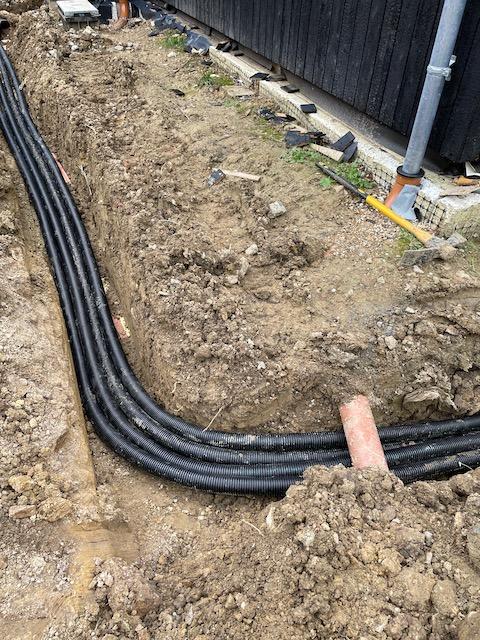
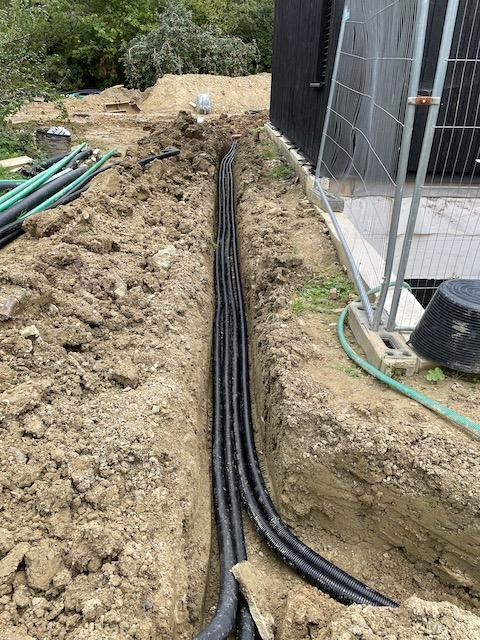


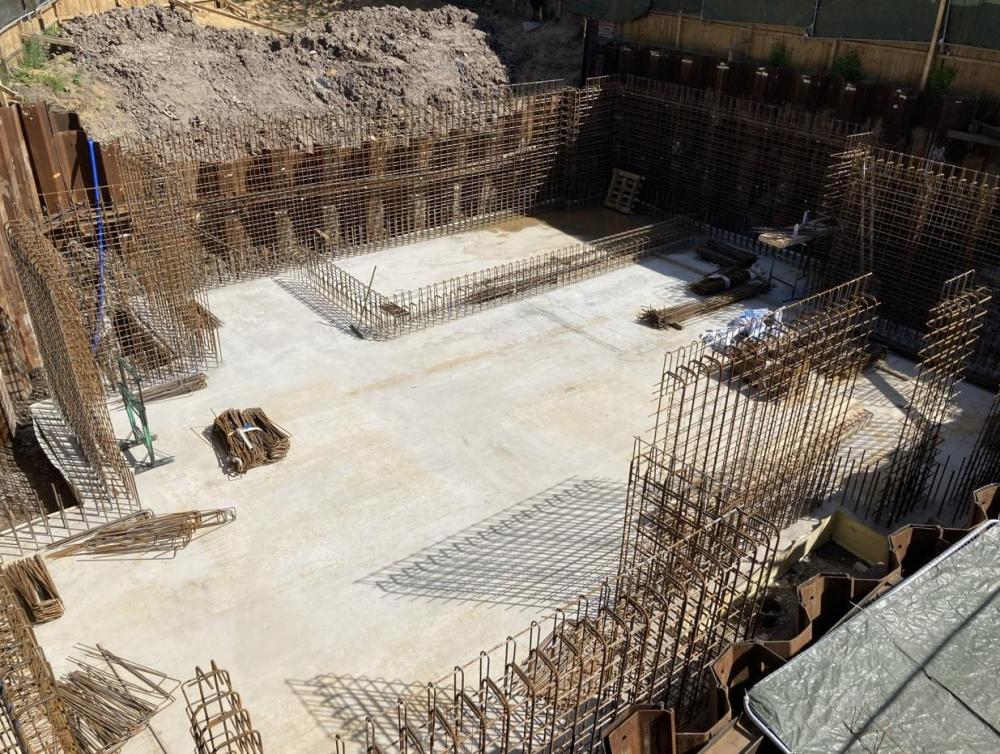

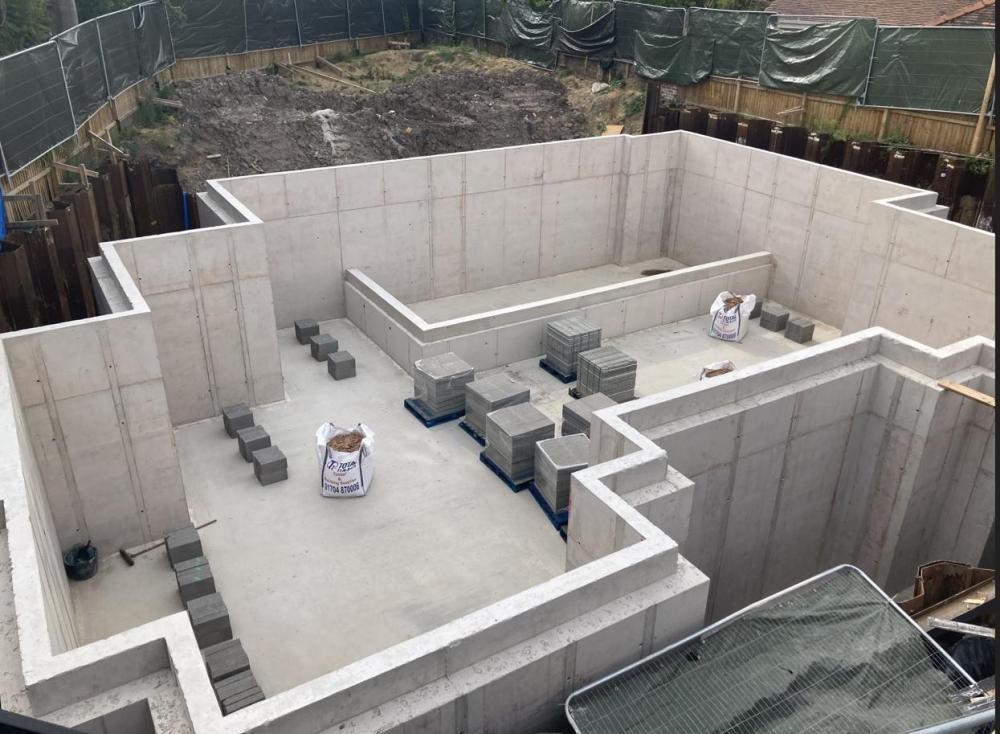

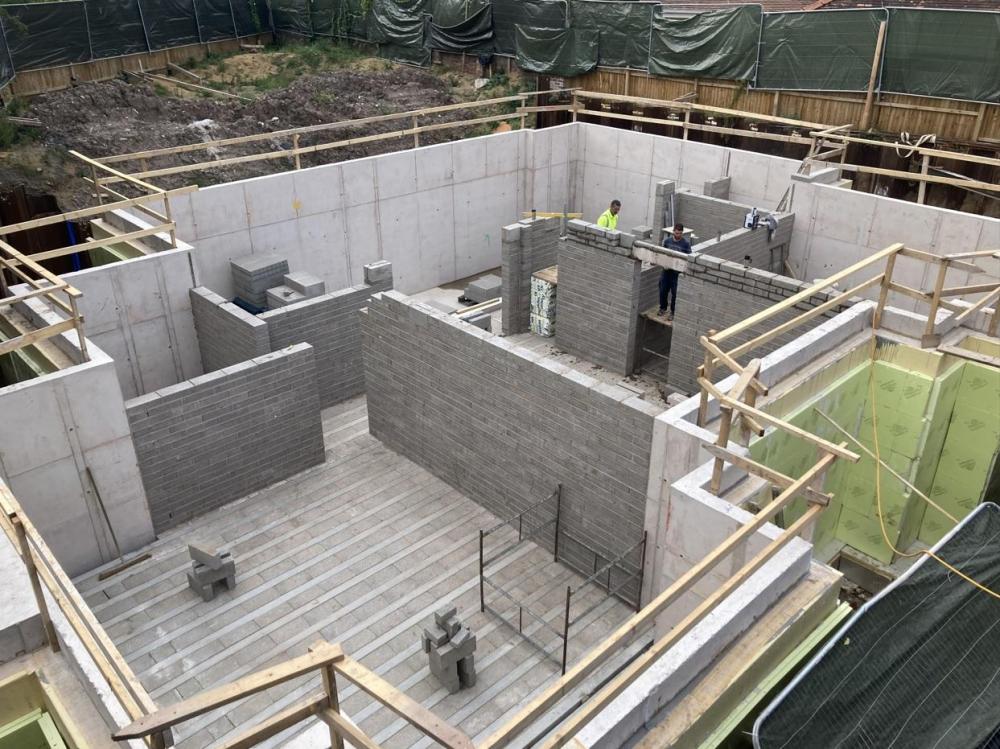

.jpg.c21f3ac78c9b7efd90cbdcb312744dc5.thumb.jpg.7adcad4c0e384f5ecd7d56b0618df6e5.jpg)











.thumb.jpg.bac90f3bbf6868cf2118d010d936c99d.jpg)


